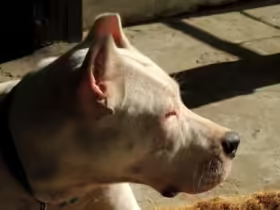Cats are famously enigmatic creatures, often leaving their owners wondering what their feline friends are thinking or feeling. Unlike dogs, who are generally more overt in their expressions, cats communicate through a subtle language of body signals and behaviors. Understanding your cat’s body language can significantly enhance your relationship with them, improve their well-being, and help you address any behavioral issues. This guide will delve into the nuances of cat body language, providing you with insights into what your cat might be trying to tell you.
1. Cat Postures and Their Meanings
1.1. Relaxed and Content
- Purring: One of the most common signs of a content cat is purring. While cats can also purr when they are anxious or in pain, a relaxed purr often signifies that your cat is happy and comfortable.
- Body Position: A cat that is lying on its side or back, with its belly exposed, is showing that it feels secure. This is a vulnerable position for a cat, so it indicates trust.
- Tail Position: A tail held up high with a gentle curve at the tip often signifies confidence and contentment. A relaxed tail held loosely at the cat’s side indicates a calm demeanor.
1.2. Playful and Engaged
- Play Stance: When a cat is in a playful mood, it may exhibit a “play bow” where it lowers its front half while keeping its hindquarters up. This is an invitation to play.
- Bouncy Movements: Quick, bouncing movements and pouncing are signs of a cat in play mode. They may also engage in “zoomies,” running around the house energetically.
2. Signs of Discomfort or Stress
2.1. Defensive and Fearful
- Arched Back: When a cat arches its back, it is trying to make itself look larger and more intimidating. This is often a sign of fear or aggression.
- Puffed-Up Fur: If your cat’s fur is standing on end, it’s a sign of agitation or fear. This makes the cat appear bigger and more threatening to potential threats.
- Dilated Pupils: Large, dilated pupils can indicate fear, aggression, or heightened alertness. If your cat’s eyes are wide, it might be experiencing stress or anxiety.
2.2. Aggressive Behavior
- Hissing and Growling: These vocalizations are clear signs that your cat is feeling threatened or irritated. It’s best to give the cat space when it is making these sounds.
- Swatting or Biting: If a cat swats or bites, it is a direct indication of aggression or overstimulation. Avoid direct eye contact and back away slowly.
3. Communication Through the Tail
3.1. Tail Position and Movements
- Tail Up: A tail held upright often means a confident and happy cat. If the tail is quivering slightly, it can indicate excitement or affection.
- Tail Flicking: A tail that is flicking or lashing back and forth might be a sign of agitation or irritation. Pay attention to other body language cues to gauge the cat’s overall mood.
- Tail Tucked: A tail tucked between the legs generally signifies fear or submission. It’s a sign that the cat feels threatened or anxious.
3.2. Tail Wrapping
- Around Legs: When a cat wraps its tail around your legs, it’s showing affection and bonding. It’s a way for the cat to mark its territory with your scent while also seeking comfort.
4. Ear Positions and What They Indicate
4.1. Ears Forward
- Curiosity and Interest: When a cat’s ears are pointed forward, it usually means the cat is interested and engaged in its surroundings. This is a sign of curiosity or attentiveness.
4.2. Ears Back
- Annoyance or Fear: Ears that are flattened against the head can indicate that the cat is feeling threatened, annoyed, or frightened. It’s often a precursor to aggressive behavior if the cat feels cornered.
5. Eye Expressions and Their Meanings
5.1. Slow Blinking
- Trust and Affection: When a cat slowly blinks at you, it’s often referred to as a “cat kiss.” It signifies trust and affection. You can reciprocate by slowly blinking back.
5.2. Direct Stare
- Dominance or Curiosity: A direct, unblinking stare can be interpreted as a challenge or dominance display. However, it can also indicate curiosity or a desire for attention, depending on the context.
6. Vocalizations and Their Meanings
6.1. Meowing
- Varied Meanings: Cats meow to communicate with humans rather than other cats. The tone and frequency can indicate different needs, such as hunger, desire for attention, or a request to go outside.
6.2. Purring
- Comfort and Healing: While often associated with contentment, purring can also be a self-soothing mechanism when a cat is in pain or stressed. It’s a versatile vocalization with multiple meanings.
7. Grooming Behavior and What It Reveals
7.1. Self-Grooming
- Normal Routine: Cats spend a significant amount of time grooming themselves to keep their coats clean and manage their scent. It’s a normal behavior and part of their daily routine.
- Over-Grooming: Excessive grooming can indicate stress, anxiety, or a medical issue. If you notice bald patches or skin irritation, consult a veterinarian.
7.2. Mutual Grooming
- Bonding: When cats groom each other, it’s a sign of social bonding and trust. It helps to reinforce social structures and relationships within a group of cats.
8. Understanding Behavior in Context
8.1. Observe the Whole Picture
- Context Matters: Always consider the context of your cat’s behavior. A single gesture or posture might not fully represent their feelings. Combine body language cues with vocalizations and environmental factors for a complete understanding.
8.2. Personal Variation
- Individual Differences: Each cat has its unique personality and quirks. What might be a sign of discomfort in one cat could be normal behavior in another. Pay attention to your own cat’s individual patterns.
9. How to Respond to Your Cat’s Body Language
9.1. Positive Reinforcement
- Encourage Positive Behaviors: Reward your cat with treats, affection, or play when they exhibit positive body language. This reinforces their trust and strengthens your bond.
9.2. Addressing Negative Signals
- Avoiding Aggression: If your cat shows signs of aggression or fear, give them space and avoid actions that might escalate the situation. Provide a safe environment where they can retreat and feel secure.
Conclusion
Understanding your cat’s body language is essential for building a strong, trusting relationship with your feline friend. By learning to read and interpret their signals, you can better meet their needs, address their concerns, and ensure their overall well-being. Remember, every cat is unique, and observing their individual behaviors and preferences will help you respond more effectively to their communication. With patience and practice, you’ll become adept at understanding what your cat is trying to tell you, leading to a happier and healthier relationship for both of you.











Leave a Reply